Franke Omni 4-in-1 boiling tap Review
Franke Omni 4-in-1 boiling tap Review
A robust and straightforward all-in-one hot water tap
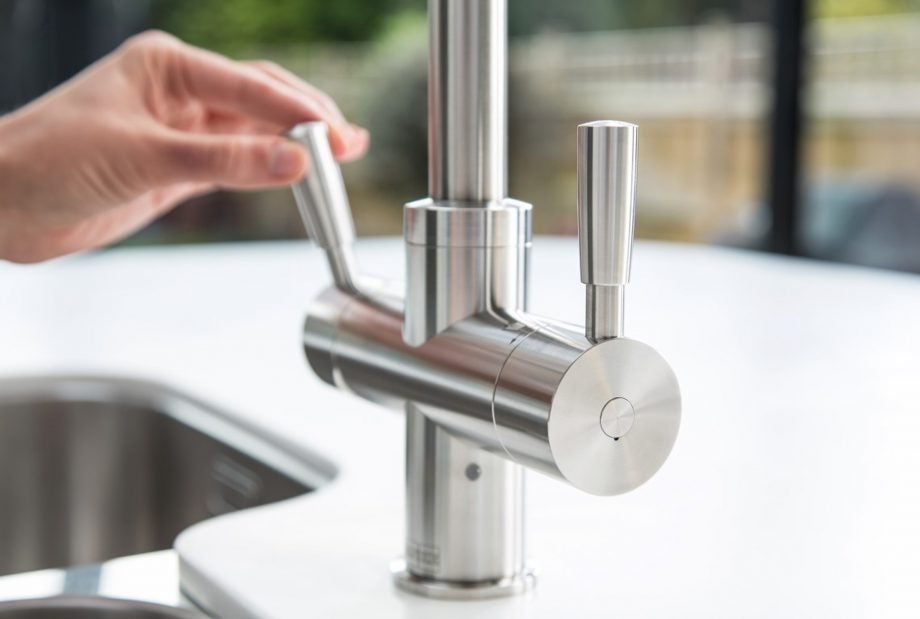
Verdict
Pros
- Very near 100ºC supply
- Large -apacity boiling tank
- 4-in-1 convenience
- Rotating swan neck tap
- Easily replaced filter
- Compact boiler unit
- Almost silent
Cons
- Filtered water can be slow
- Slight splutter on boiling water
- Only one tap option
Key Specifications
- Review Price: £1442.00
- True 100ºC boiling water
- Cold filtered water
- Integrated mains hot/cold
- Cool-touch tap
- LED filter check light
- 4-litre boil tank
- 3-year guarantee
What is the Franke Omni 4-in-1 tap?
Delivering filtered 100ºC boiling water, filtered cold water and mains hot/cold from a single tap, Franke’s Omni 4-in-1 is something of an all-rounder in the kitchen. It’s ideal for those who want to integrate a boil tap into the main sink and it delivers up to 4 litres of hot water for tea, coffee, cooking and blanching.
The Omni has a neat, compact boiler unit and is super-efficient. There’s only the one tap design available, but its neutral style will fit a range of kitchens. The canister filter will slow flow significantly if your home suffers low mains pressure, but for an all-round filtered boiling, cold and mains water tap, Franke’s Omni 4-in-1 takes some beating.
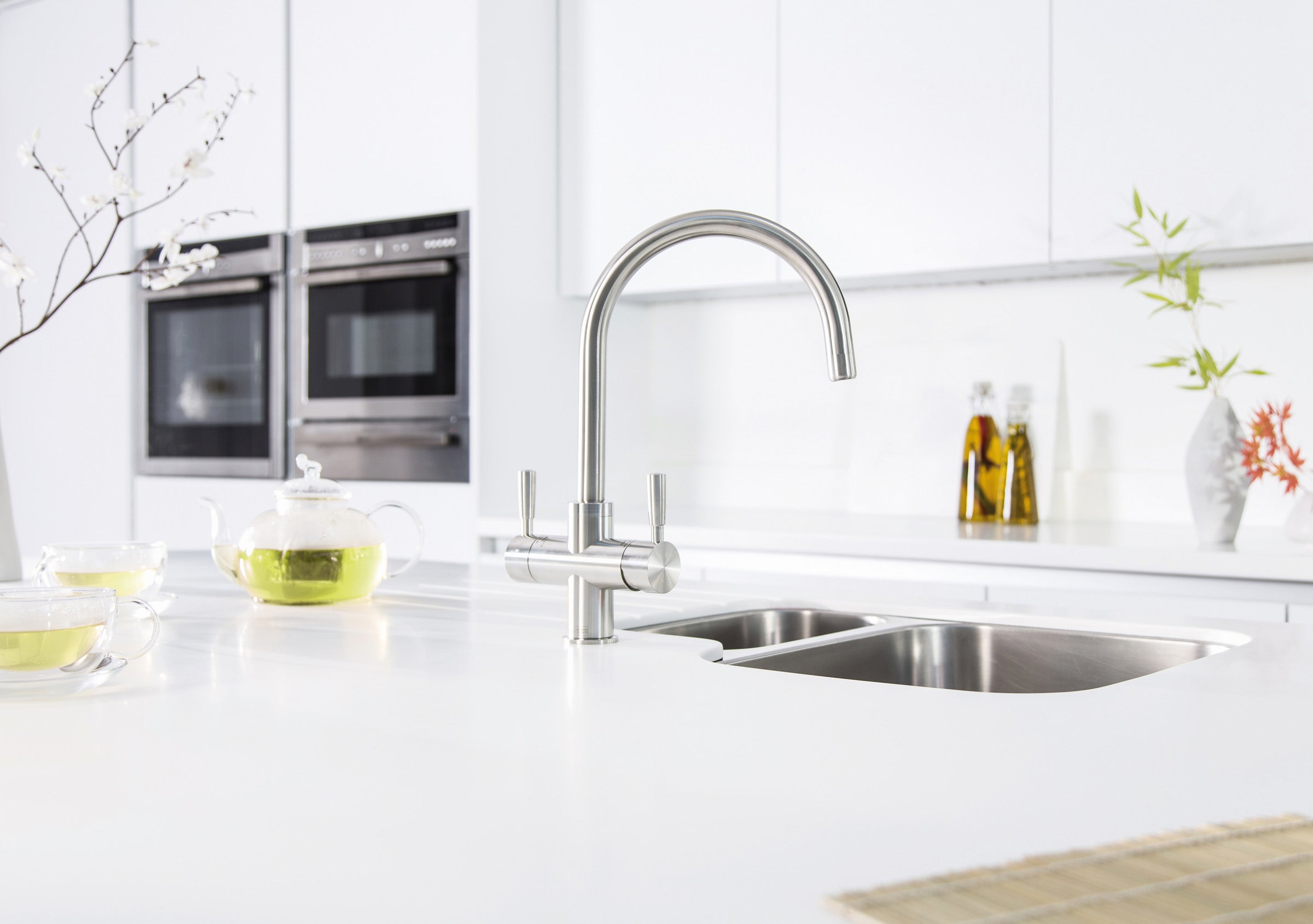
Franke Omni 4-in-1 – Design and features
With boiling water taps becoming a popular add-on for kitchen refurbs, Franke’s 4-in1 Omni tap is one of the easiest to integrate into your existing setup. Simply whip-out your old tap and replace with the Onmi 4-in-1 system. The single tap design offers regular mains hot and cold water, plus filtered boiling and cold water.
The Omni system comprises three key parts: the tap, the boiler unit and the water filter. The tap sports a sophisticated brushed stainless-steel, swan-neck design. It feels robust and the surface resists finger prints admirably. The levers control hot/cold mains water on one side and filtered boiling/filtered cold on the other.
On the main pillar is a small LED that illuminates only to let you know when the filter needs changing. This is attached to a small battery-powered timer unit that you can place in the cupboard below the sink using the supplied piece of Velcro.
The boiler unit is nicely compact, holds up to 4 litres of boiling water, and simply plugs into a standard mains electricity socket – there’s no need for extra heavy-duty wiring here. It’s well insulated and cool to the touch, with only the nut on the boiling water output that becomes a bit toasty; but not dangerously so.
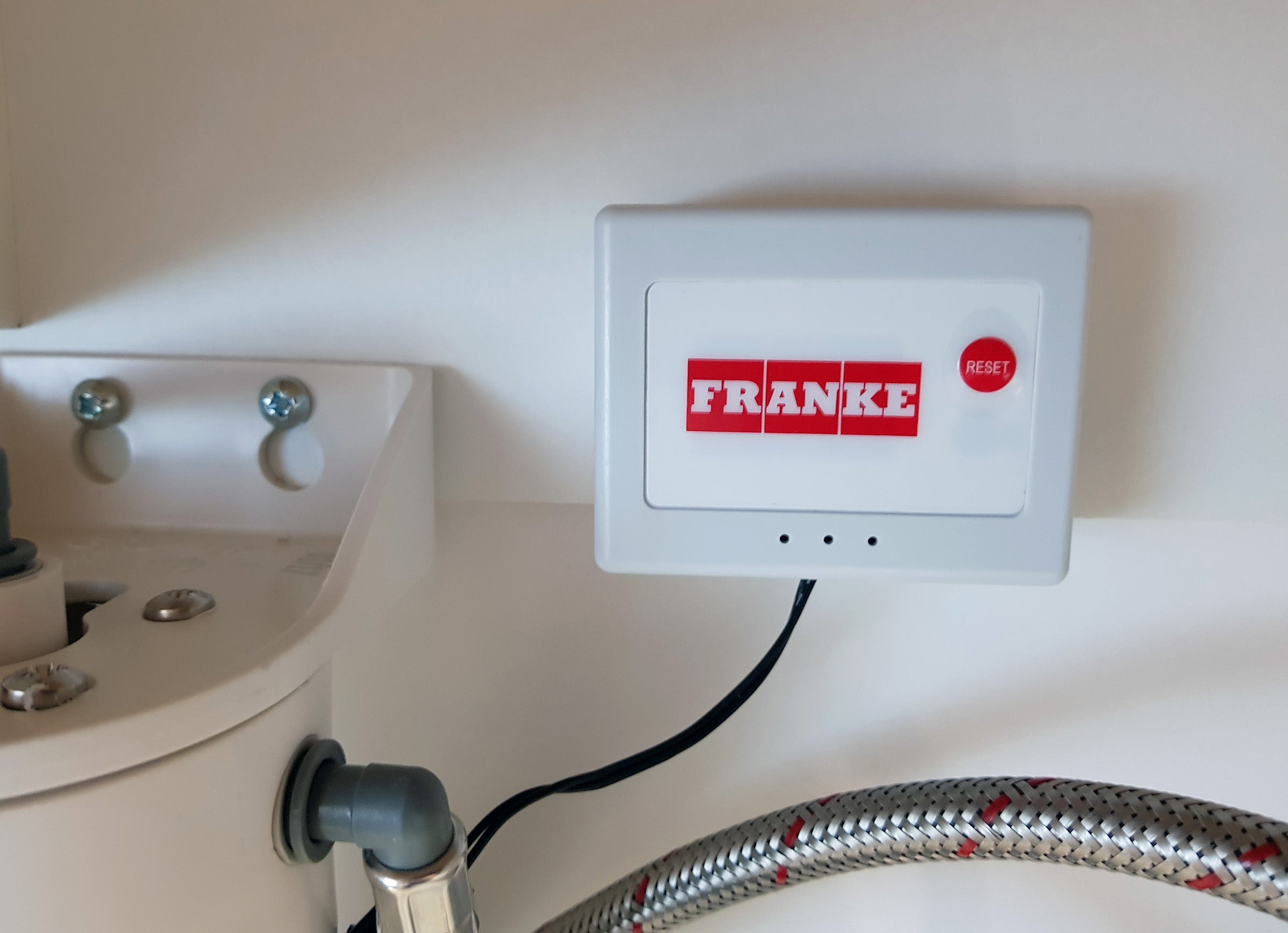
The water filter is a stand-alone cartridge design. The housing is attached to the back of the cupboard and the main body unscrews to reveal the filter cartridge. This should last about six months. Replacements cost around £40 for the genuine Franke article, and even less for compatible third-party cartridges.
Installing the whole system certainly isn’t beyond the average DIYer. The trickiest part is probably removing your old tap. Since this is a genuine boil tap – it dispenses water at 100ºC – the boiler has to be vented. This involves some creative plumbing using a dedicated stand-pipe, which allows condensation to drip into your waste pluming. The rest of the connections are simple screw-fit nuts, and each fitting comes supplied with a plastic spanner-sleeve so they can be tightened by hand.
We managed the DIY installation in the lab with ease. Following the short flushing and commissioning procedure, we were up and running with filtered boiling and filtered cold water in less than an hour.
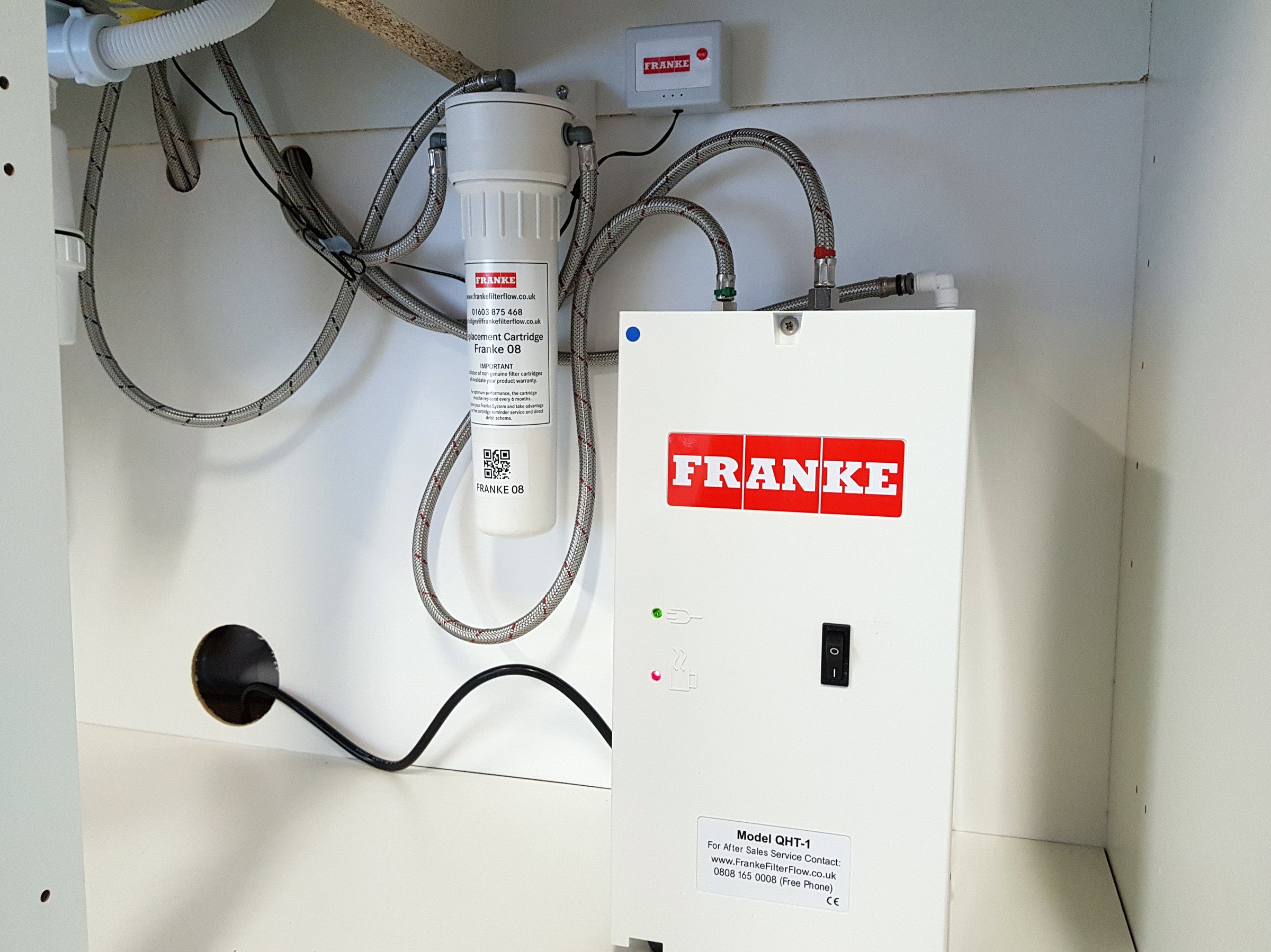
Franke Omni 4-in-1 – What’s it like to use?
Franke’s boiler unit is very much fit and forget. It has no controls, other than the main power switch, and is designed to be left on all the time. Two lights on the front indicate power-on in green and a red/green lamp to indicate when the unit is heating/ready to dispense respectively.
Since this unit supplies only hot water, there’s no chiller system. As a result, there’s no compressor or fans to make a noise. It’s blissfully silent, except for the faint boiling noises muffled by the unit’s internal insulation. There’s no water pumping system, either. This does mean the flow rate of both hot- and cold-filtered water is at the behest of your mains water pressure, and further restricted by the filter.
The system will work on mains pressures between 1.5 and 5-bar, but the lower end of that is going to see something of a dribble from the business side of the Omni tap. We have a regulated 2.5-bar pressure in the lab and the flow rate from the filtered water side of the tap was noticeably slower than the side connected to the mains. Around 2.5-bar might be a more realistic minimum home water pressure setting.
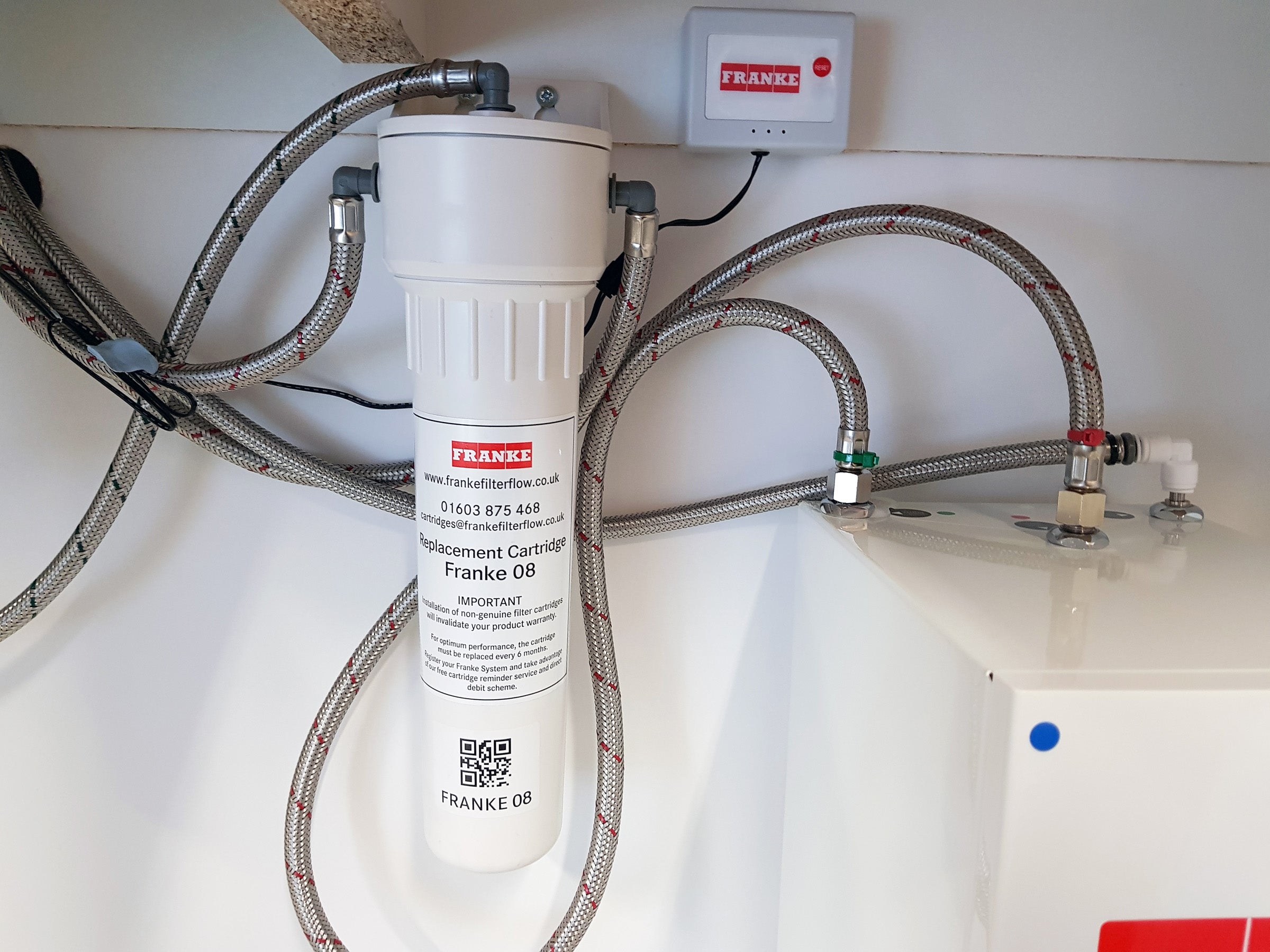
Up top, the tap itself feels lush. It’s solid, with the levers offering a smooth, positive feel. There’s only the one design, though, so you’ll need to ensure it fits in with your kitchen décor. The tap’s swan neck can be freely rotated for more convenient delivery to the side of the sink – ideal for filling pans.
The tap’s left-hand lever dispenses hot and cold water, controlled by moving the arm back and forth and tilting outwards to regulate flow. The other side has a safety-orientated push-down lever and spring-loaded action for boiling water. The same lever simply pulls forward to deliver filtered cold water. The boiling lever can also be locked off from prying fingers using the small plastic clip supplied.
There’s no way to hold the boiling water lever in an ‘on’ position hands-free, or dispense a set amount of water. If we’re being picky, the spring-loaded safety feature on the boiling lever takes a little getting to. Simply let it go from the full-on position and it will overshoot forward a few degrees and start to dispense cold filtered water. But since you’d normally hold the lever as it comes back to the ‘off’ position, this isn’t a deal-breaker.
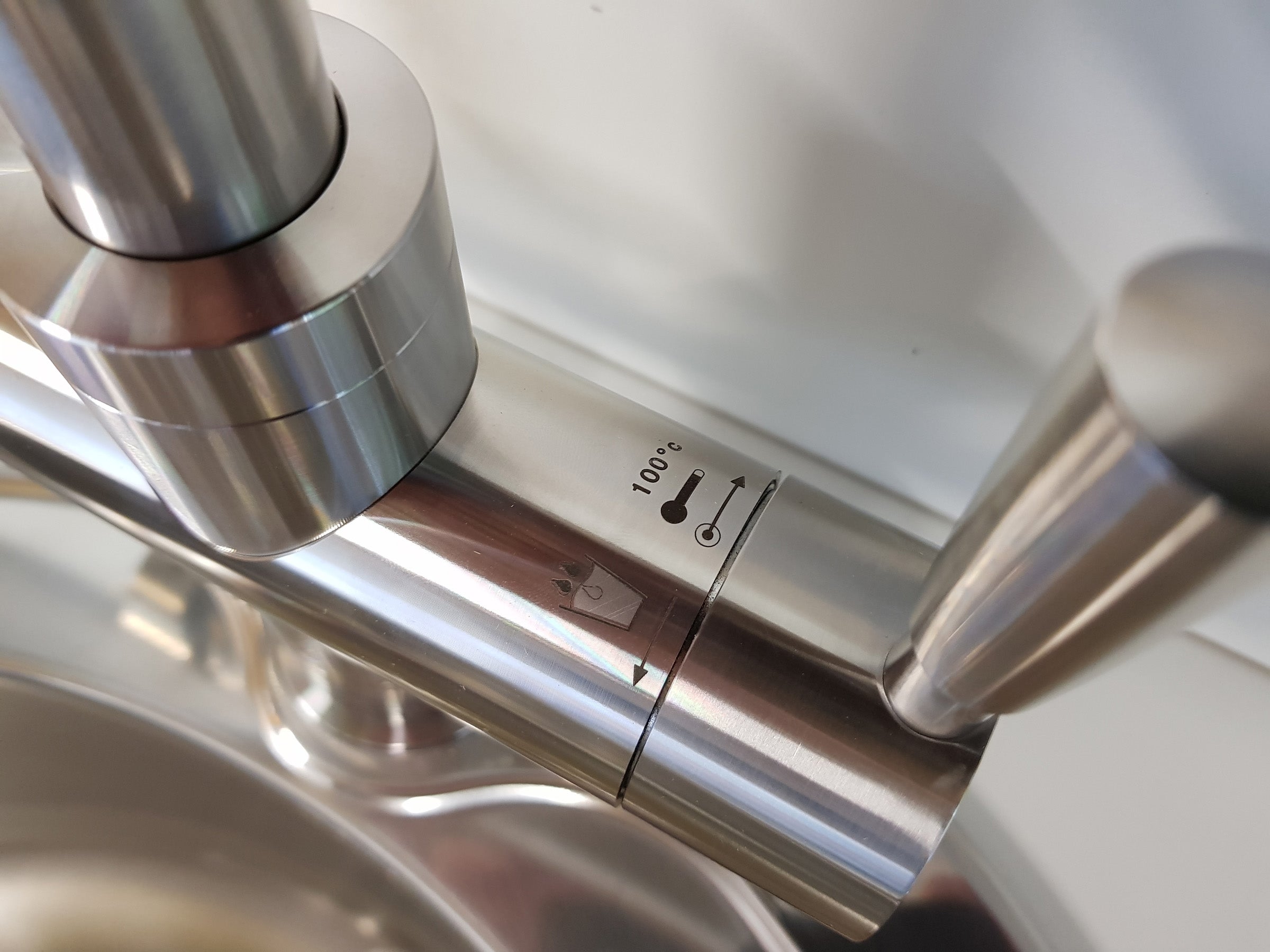
Cold filtered water comes through slowly and smoothly. There’s a little over-run when you turn off, since some of the water flows out of the bend of the swan neck. It’s a second of extra flow at most, however.
One of the Omni’s headline benefits is that it dispenses true 100ºC boiling water. Many boil taps that have been ported over from the commercial world restrict the temperature to 98ºC by WRAS safety regulations. For use in the home, it’s questionable whether that extra two degrees makes a difference, though. Moreover, physically boiling water takes a fair bit more energy than simply raising water to 98ºC – thanks to the energy required to change the water’s state.
Sure enough, the Omni delivers water that’s properly boiling, complete with associated steam. That’s perfect for cooking, blanching or any other requirement for true boiling water. The downside is that steam in the flow can make the supply a bit splashy. It’s best to hold a cup up to the tap, rather than place it in the sink, to stop splashes.
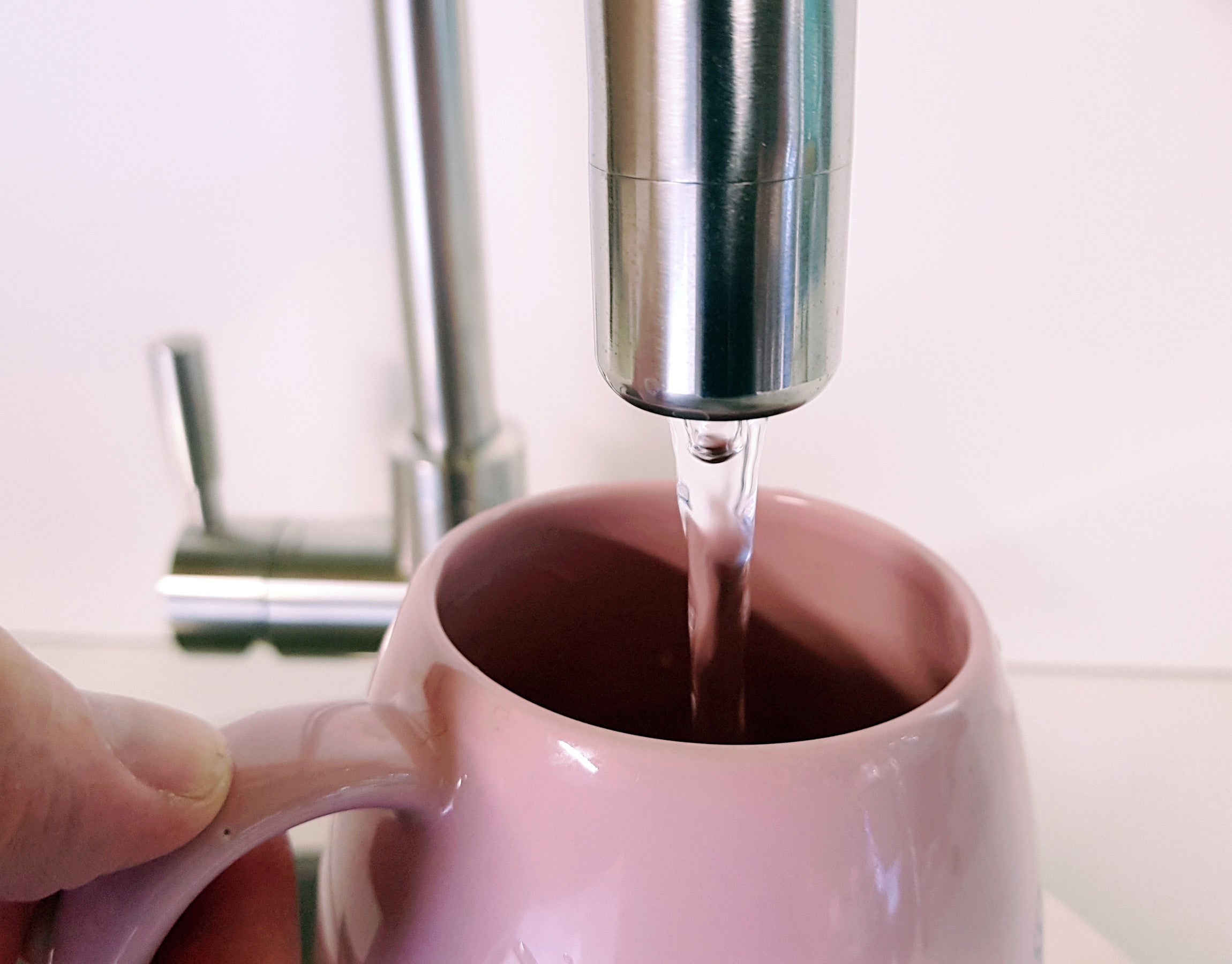
Again, when the boiling tap is shut off there’s a slight over-run. This is a combination of water remaining in the swan neck and the steam pushing out the last few drips. It’s a second or two at most, though, so you’ll quickly get used to that too.
Even when you’ve been dispensing many litres of boiling water, the Omni tap remains impressively cool to the touch. Only the very tip of the swan neck becomes warm; it certainly isn’t scalding hot. For its style, convenience and ease of use, there isn’t a lot to fault the Franke 4-in-1 Omni.
Franke Omni 4-in-1 – How well does it perform?
Set up and running, the Franke’s boiler is blissfully quiet. Most of the time, you won’t even know it’s running. From flushing and commissioning, it was ready to deliver boiling water in less than 10 minutes.
Our low-ish 2.5-bar mains water pressure and the Franke’s filter cartridge meant that flow-rates were pretty sluggish, however. It dispensed 0.4 litres in 15 seconds, or 1.6 litres per minute. This isn’t rapid, but it’s usable nonetheless. You’re looking at around 12-15 seconds to fill a decent-sized coffee mug with boiling water, and around 20-25 seconds for a pint glass of filtered cold water.
The filtered cold water looked crystal clear and suffered little odour. It had a marginally improved taste over the water from the mains.
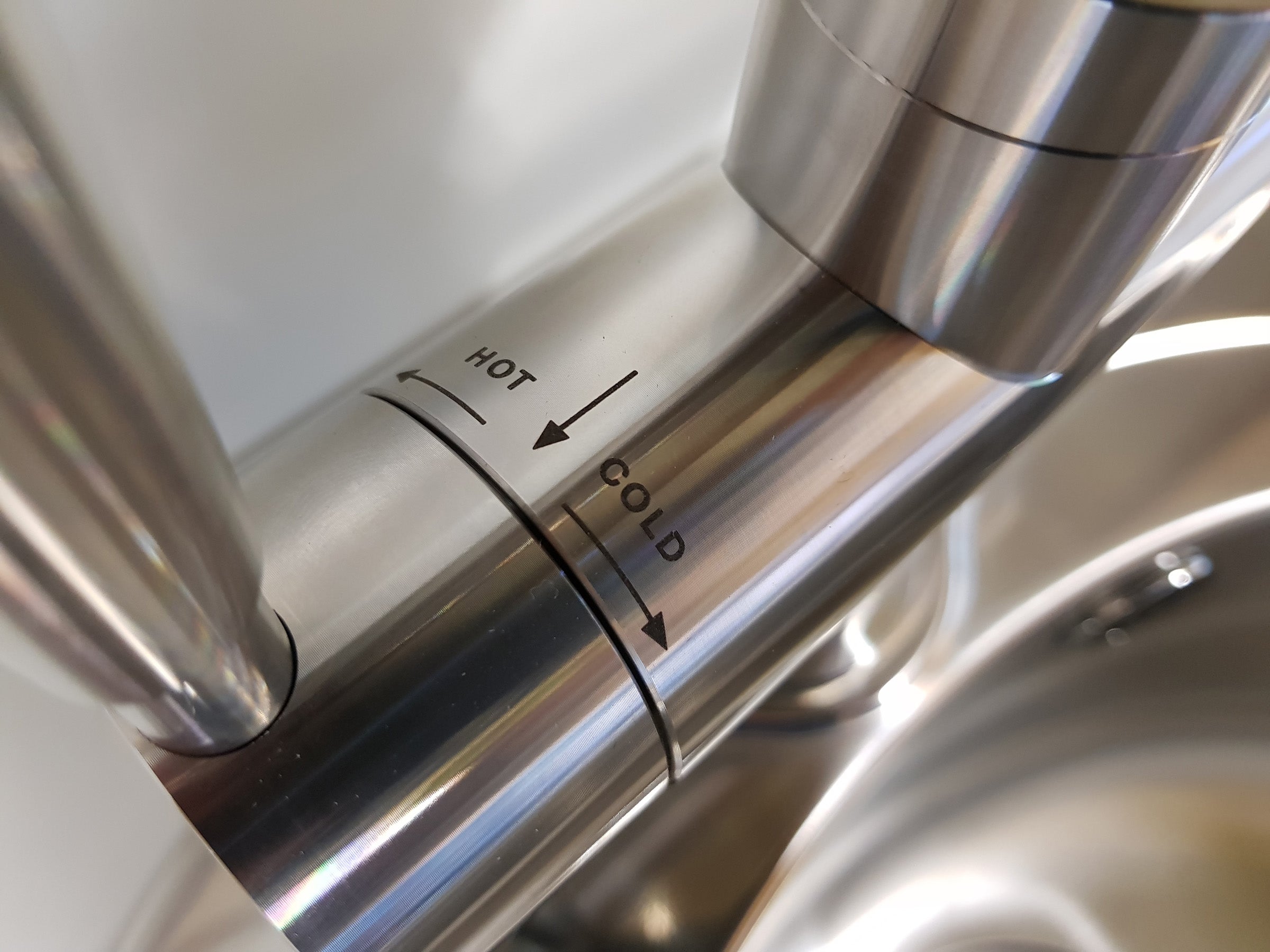
On the hot side, the Franke put out very close to boiling water. Over extended testing, this ranged from 98 to 99.6ºC. At the top end of that temperature range, the stream was complete with steam and a little splashiness in the delivery. That really is boiling water.
Our tests involved dispensing boiling water for 15 seconds and waiting one minute. We then repeated the cycle eight times. The Franke’s boiling water temperature remained impressively high, even under this serious demand. All 15-second bursts dispense surround 0.4 litres of water. Temperature went from over 99ºC for the first cup, dropping linearly to 96ºC for the last. That was well over 3 litres of boiling or near-boiling water. A great result.
If you push past the Franke’s 4-litre tank capacity then flow rate remains unchanged, but the temperature drops. On an extended 12-cycle test, water temperature had dropped to 76ºC. Rested, the ready light then came back on in well under our 10 minutes and the tap was ready to deliver more true boiling water at 99.6ºC. For big families, busy cooks or those with a serious coffee addiction, the Franke will not let you down.
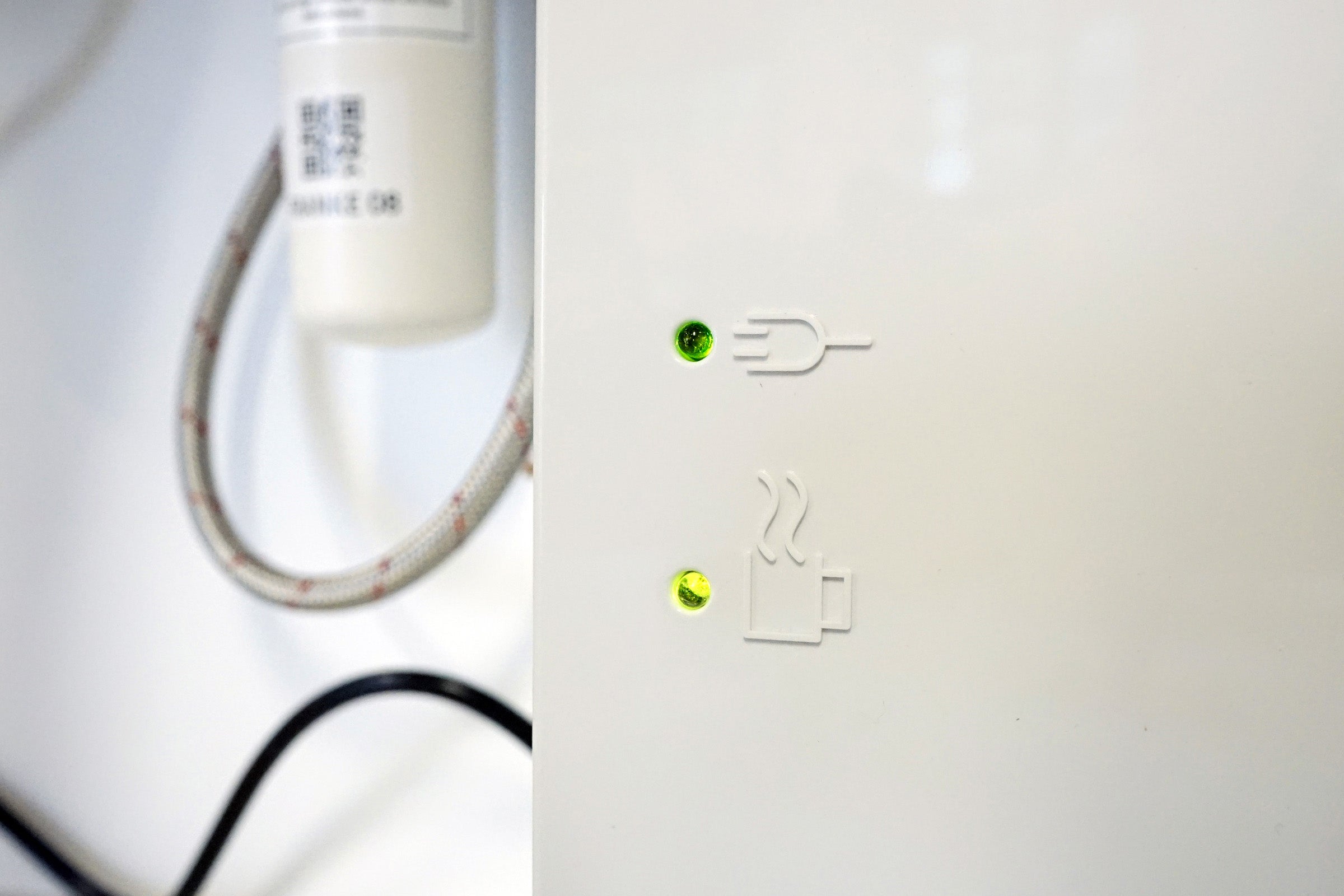
Franke Omni 4-in-1 – How much will it cost to run?
There’s no arguing with the sheer convenience of a boil tap, with these units even able to save you money in electricity. They heat only the water you’ll use, unlike a kettle. They’re also well insulated so loose little heat into the kitchen, unlike a hob. Moreover, there’s none of that putting the kettle on to boil, walking away to maximise the three-minute wait and forgetting about it. (Or is that just me?).
If you boil the kettle a lot and regularly cook with water on the hob, the Omni 4-in-1 tap will almost certainly be a more efficient way of heating all that water. But if you’re out most of the week, don’t drink tea like a thirsty builder, and do more frying and oven cooking that hob-top boiling, it won’t.
The reason being that the Franke’s boiler unit has to keep 4 litres of water at boiling point 24/7. There’s no low-power or sleep mode for quieter periods – at night, for example. Even with very good insulation there’s some heat loss to overcome. In our tests this amounted to around 0.7kWh per day, or about 10.5p at a typical billing rate of 15p/kWh. That £38 or so per year.
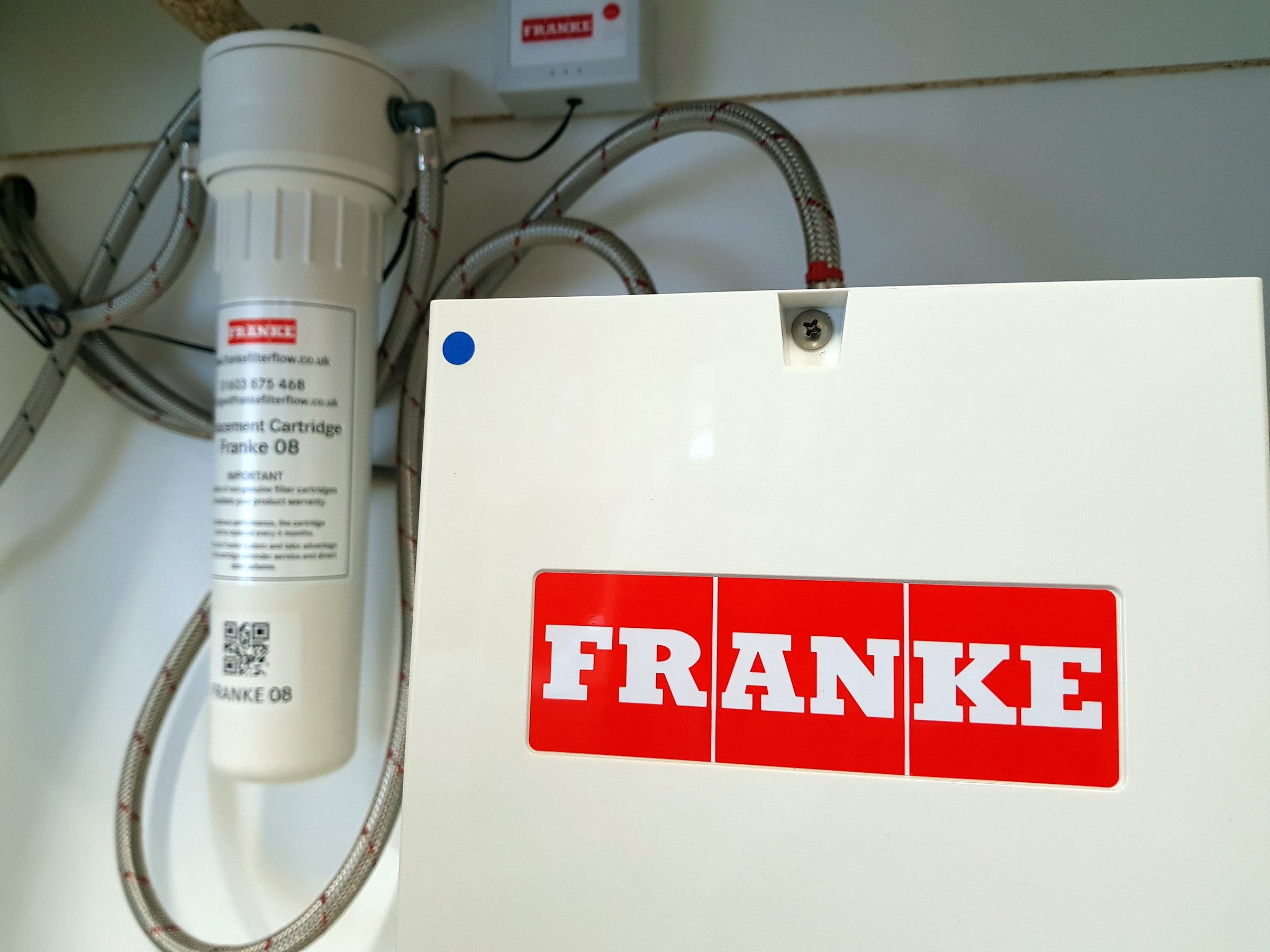
The actual cost for boiling water dispensed will be lower than a kettle or hob, however. Enclosed, insulated hot-tap boilers are simply more efficient when it comes to heating water. The more boiling water you use in a day, the more these boil-tap efficiencies come into play.
To boil 20 litres of water per day, the Franke uses around 1.9kWh or 28p of electricity. Assuming you do that for 300 days of the year (the other days are holidays, visiting relatives, down the pub and so on), that would cost you around £84 per year in direct heating costs. Add in the standing electricity draw of £38 and total running cost would be £122 per year in this scenario.
For the same task, an electric kettle would use 2.2kWh (33p per day or £99 per year). Boiling 20 litres of water on a standard ceramic hob would take 2.5kWh (36p per day or £108 per year), and a gas hob a whopping 3.2kWh of gas energy (cost depending of tariff). Only boiling water on a modern induction hob gets close to the boil taps heating efficiency for heating 20 litres of water at 2.0kWh (30p per day or £90 per year.)
The kettle figures assume that you use all the water you boil. Estimating that most people put a third more water in the kettle than they use, you’d actually be boiling 30 litres per day. That would cost around £150 over the year – considerably more that the Franke’s £120 to deliver the same amount of boiling water.
While the Franke Omni 4-in-1 can potentially save some electricity, its real benefit is the sheer convenience. Not boiling the kettle alone saves you around three minutes each time and there will be no more waiting around for a pan of water to come to the boil before cooking.
Having mains hot and cold, filtered boiling and filtered cold water all available instantly is the best thing since, well, hot and cold running water.

Should I buy the Franke Omni 4-in-1 tap?
Franke’s Omni 4-in-1 boil tap is a luxury item, but wins us over with its sheer simplicity and convenience. Energy saving is debatable and will depend upon use, but the Franke Omni lived up to its promise of delivering true boiling water. Filtering the cold supply noticeably improved water taste, too.
The Omni’s swan neck can over-run and dribble a little water after each tap is turned off, plus the filter slows the flow rate, particularly in low mains pressure households. Yet for single-tap convenience, the Omni 4-in-1 makes a great add-on for new and older kitchens alike.
Verdict
A robust, effective and straightforward all-in-one tap combining true 100ºC filtered boiling water, filtered cold water and mains hot and cold supply.


